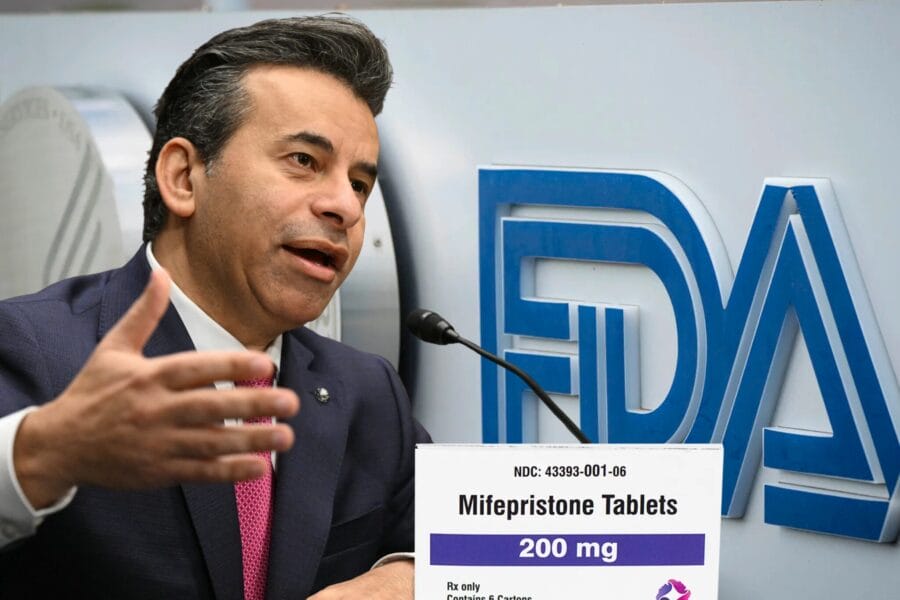Written by Brooke Paz
The Future of Abortion Pill Access
In 2022, the Supreme Court’s Dobbs v. Jackson Women’s Health Organization decision overturned Roe v. Wade, reviving previously unenforceable abortion laws, inspiring new legislative efforts, and inciting scrutiny of life-affirming legislation. Carolyn McDonnell, Litigation Counsel, examines the history of the federal rules prohibiting mail-order abortion and their modern significance in her article, Mail-Order Abortion Rules: Text, Context, and History of the Comstock Act’s Restrictions on Mailing Abortion Pills, published in the Ave Maria Law Review.
Before Roe, states largely criminalized abortion with extremely limited exceptions for life-threatening situations. “Abortion” was a legal term of art that meant the intentional termination of a pregnancy. Although no federal statute defines abortion, Congress has adopted numerous protections for women and unborn children, including the Born-Alive Infants Protection Act, Partial-Birth Abortion Ban Act, conscience rights laws, abortion funding limitations, and restrictions on mailing or shipping abortion-inducing drugs.
The Comstock Act Limits Mail-Order of the Abortion Pill
McDonnell’s article discusses two key federal statutes limiting mail-order abortion. First, 18 U.S.C. § 1461, which originated in the Comstock Act of 1873, restricts the dissemination of abortion pills through the mail under Congress’ Postal Clause power. Secondly, 18 U.S.C. § 1462, enacted by Congress in 1897 and later amended to adapt it to evolving technology, prohibits the shipment of abortion pills through express companies, common carriers, and interactive computer services under Congress’ Commerce Clause power.
The Supreme Court affirmed these statutes, finding §1461 properly utilized the Postal Clause authority by regulating instrumentalities of interstate commerce to punish the dissemination of certain restricted materials. Additionally, the Court found that Congress could reasonably restrict these materials under its Postal Clause power because the materials posed significant threats to the public. Both laws have been amended and reaffirmed several times up until 1996 to account for modernity. Furthermore, 18 U.S.C. § 552 strengthened these laws by requiring federal official compliance.
In December 2022, the Biden Administration’s Office of Legal Counsel issued a memorandum asserting that § 1461 did not apply to chemical abortion when the sender mailed them for lawful use. The OLC memorandum contended its interpretation extends to § 1462 as well.
However, this interpretation is flawed, as the statute itself never uses the term “unlawful.” Although the memorandum draws the term from caselaw, when the statutes were recodified, a “lawful” abortion was generally limited to life-saving cases. Additionally, inserting an intent element into the statute would undermine principles of federalism, allowing states to nullify federal law.
Furthermore, many important safety concerns justify restrictions on mail-order abortion. In-person visits are necessary to screen patients for eligibility factors such as ectopic pregnancy, gestational age, intrauterine device, Rh-negative blood type, and potential intimate partner violence. These evaluations cannot be adequately conducted through telemedicine, endangering women and compromising their informed consent.
Three Common Myths Regarding Mail-Order Abortion
Three common myths that distort the mail-order abortion debate include (1) the statutes are obsolete, (2) repealing these statutes would be beneficial, and (3) the statutes could be interpreted to prohibit mailing lawful materials.
First, some claim courts should apply “desuetude” to the mail-order abortion restrictions, that these rules lack enforceability because they’ve fallen out of use, which is a concept only recognized by West Virginia courts. While Roe nullified these statutes, Dobbs returned the issue of abortion to the democratic process and revitalized dormant abortion laws. Additionally, these longstanding statutes have been amended multiple times up until 1996, accounting for modern considerations.
Next, numerous legislative attempts to amend or repeal §§ 1461-1462 have rightfully failed. Repealing these statutes would remove protections against child pornography, arson, murder, and assassination. Also, critics citing First Amendment concerns fail to account for existing obscenity caselaw, which limits enforcement of other statutory provisions.
Finally, the statutes only prohibit materials “designated” for producing abortion. Thus, surgical instruments and drugs that could also be used for ulcer prevention, Cushing’s syndrome, labor induction, miscarriage, hemorrhage, and ectopic pregnancy are still permitted for mail transport under the statutes.
Read AUL’s Policy Paper
In summary, McDonnell’s article comprehensively assesses the Comstock Act and subsequent statutes, analyzing the legal understanding of “abortion”, the history of the statutes and attempts to invalidate them, the benefits of mail-order abortion restrictions, and the pervasive myths that seek to undermine these rules. Understanding these issues is a vital part of the post-Dobbs conversation, empowering the pro-life movement to combat chemical abortion.




